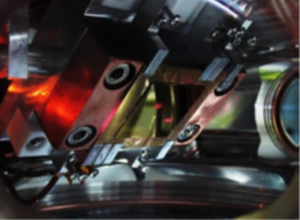Research project selected under the 2020 call for proposals
Principal Investigator : Baptiste Allard
Involved Teams :
- LCAR / Interferometry

Type of project : Disruptive Project
Date (start/end) : 2020 – 2023

The Manipulation of atoms with laser has opened up the way to a new field of applications making use of cold atoms to perform high precision measurements. New instruments called atom interferometers are now used in many research areas. The inertial sensors using cold atoms offer similar performances to the best commercial sensors. They thus become serious candidate for gravimetry and geophysics applications. For example, recent studies have demonstrated the interest of the cold atom sensors for the mapping of the earth gravity field from space. Such space missions require ultra-cold atomic sources to benefit from the long interrogation time available in zero-gravity. However, the current apparatus producing ultra-cold atoms are complex, cumbersome and energy consuming.
This project aims at miniaturizing the part of the apparatus that produce cold atoms. It will combine two technics to manipulate the atoms on a same component, called atom chip. The chip will offer both a magnetic trapping feature realized by conducting micro-wires and an optical feature brought by a surface diffracting grating. The grating is designed to produce the required optical field for the laser cooling of atoms out of a single incoming beam. The magnetic trapping feature will allow a fast and efficient final cooling, using only low currents.
The two technics have already independently demonstrated their efficiency and their capability to simplify cold atoms apparatus [1, 2]. The main objective of this project is to combine those two technics in a first and compact cold atom source prototype which fulfils the prerequisite of a space mission.
[1] J. Rudolph, et al., “A high-flux BEC source for mobile atom interferometers” New J. Phys. 17, 065001 (2015).
[2] C. C. Nshii, et al., “A surface-patterned chip as a strong source of ultracold atoms for quantum technologies” Nat.Nanotechnol, 8(5), 321–324 (2013).
